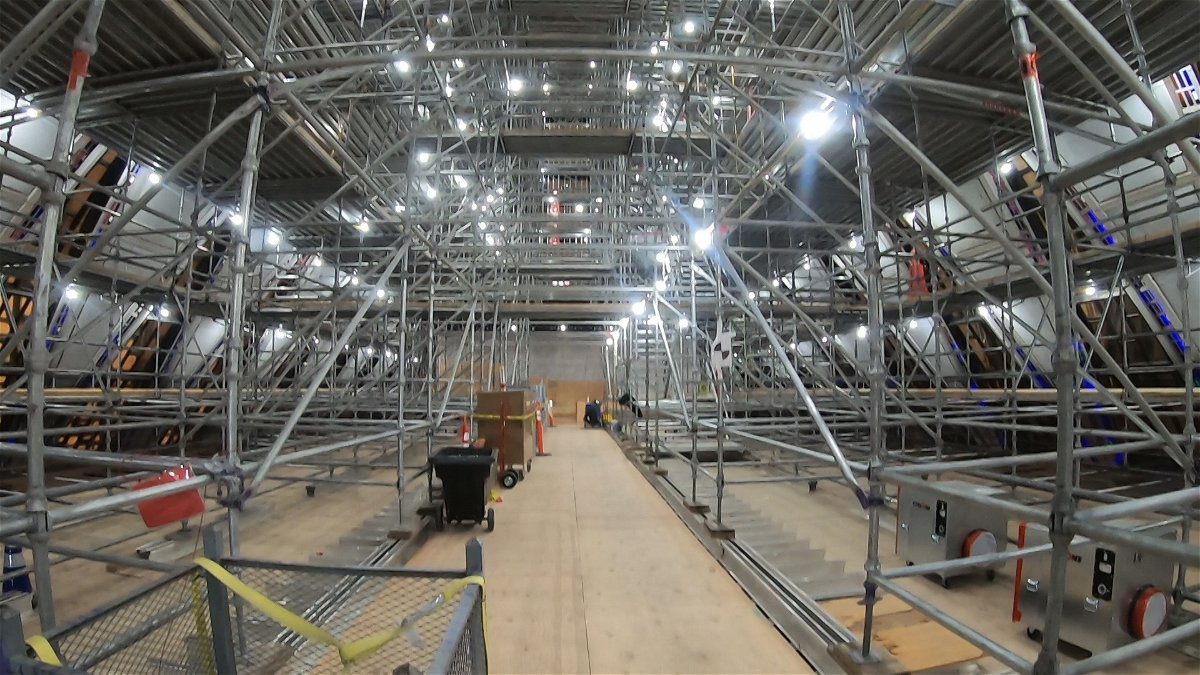Protective cocoon built around chapel at USAFA
COLORADO SPRINGS, Colo. (KRDO) -- Prior to the pandemic and prior to the start of the renovation project, the U.S. Air Force Academy chapel was the most visited man-made attraction in Colorado, attracting more than 500,000 visitors every year.
At this time, it is still off-limits to guests, but this week KRDO was allowed inside the perimeter for an exclusive look at the latest milestone in this 5-year project.
The structural problems with the chapel actually began around the time it opened nearly 50 years ago, according to Campus Architect Duane Boyle.

"The building has leaked ever since it opened in 1962," he explained.
Boyle said due to budget constraints at the time, the original builders had to use what he called "value engineering" to find less expensive solutions to complete construction.
Among those solutions was skipping a secondary internal drainage system and instead relying on caulking along the 32 miles of joints on the exterior.
The caulking turned out to be problematic immediately.
Over time, the frequent leaking has damaged the pews, the floors, and even the famous pipe organs.
"Many of the pipes in the organ no longer worked," says Boyle, "In fact, both the Protestant and the Catholic organ are now in Atlanta for refurbishment."
In late 2019, after years of patching and band-aids, the long-overdue renovation began.

The architectural marvel will eventually be stripped down to the original steel frame, then rebuilt according to the original design created by architect Walter Netsch.
The challenge is figuring out a way to strip it down without creating further damage to the interior, even after the pews and other sacred artifacts are removed.
The solution proposed by the contractor was a "cocoon".

"It was a really good idea by J.E. Dunn, to be able to enclose the building, so that in the bad weather that we get here at the Academy, the winds, the cold weather, the rains in the summer, they can work on the building 24/7 if they want to," explained Boyle.
The final sections on the east wall are going up this week, and once all sides are filled in, the disassembly can finally get going.
From a distance, it appears the walls are made of solid white panels, but the material is actually a fabric that is tightly stretched on all sides.
According to Senior Project Engineer Alex Delimont, the fabric has been tested in winds up to 130 miles per hour, and it has already withstood winds greater than 90 mph at the Academy.
The chapel is now a massive arrangement of scaffolding that allows workers to access all sides from the floor to the ceiling.

Crews spent months carefully cataloging more than 20,000 pieces of stained glass which will be refurbished by the same California company that created them.
According to Delimont, only about a dozen were found to have cracks and needing total replacement.
After refurbishment, they will be then put back in precisely the same spot as before.

"The scheme is very intentional," says Delimont, "so if you look from one side to the other, it's essentially a mirror."
The 17 spires and aluminum skin will be replaced entirely while maintaining the exact same style and slightly bronze color.
Boyle says matching the original color and characteristics was among the biggest challenges because they had to find exactly the right shade of metal that was also not anodized, which allows the skin to actually take on a slightly different color as the sun shines from different angles throughout the day.
However, unlike the original construction, no "value engineering" will be used this time.
The original leak prevention design will be used, which should help ensure that the chapel can serve its cadets and congregations for at least another 50 years to come.

